A world history timeline shows important things that happened throughout human history. It's like a picture that shows what happened in order from the beginning of human civilization until now. The timeline should indicate the critical dates, events, people, places, and ideas that helped make history.
A world history timeline is important because it shows how things that happened in the past affect what is happening now and what will happen in the future. It benefits students and people who like history because it gives a complete picture of human history. It helps us see how different and complicated the world is.
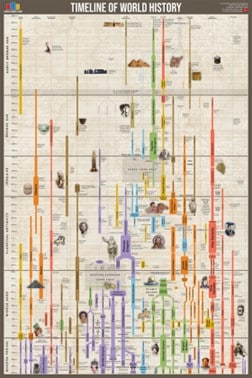
Analyze the World History Timeline and Identify the Big Events
The world history timeline is like an extensive list of important things in human history. It shows how the world changed from a long time ago to now. It demonstrates critical moments, people, and what they did to make the world the way it is today.
The timeline includes several significant events that have profoundly impacted human history. Some of the most important events include the invention of the wheel in 3500 BC, the birth of Confucius in 551 BC, the crucifixion of Jesus Christ in 30 AD, the fall of the Western Roman Empire in 476 AD, and the list goes on.
The world history timeline that indicates the significant events can be separated into six distinct periods macroscopically. Each represents a significant era in human history. These periods are:
- Foundations: The first part of world history is called Foundations. It includes significant events like the start of farming, the development of civilizations in Sumer, Babylon, and Egypt, the creation of writing, and the formation of major religions like Hinduism, Judaism, and Buddhism.
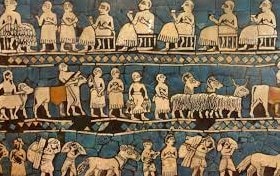
- Classical: This period lasted from 600 BCE to 600 CE. Major world empires like the Greek and Roman empires appeared during this time. Hellenistic culture and classical philosophy also developed, and major world religions such as Christianity and Islam emerged.
- Post-Classical: This period spans from around 600 CE to 1450 CE. It includes the emergence of major world empires like the Byzantine Empire, the Mongol Empire, and the Islamic Empire, the development of major world religions like Sikhism and Taoism, and the spread of trade and commerce across Eurasia.
- Early Modern: This period extends from around 1450 CE to 1750 CE. It includes the Age of Exploration, the emergence of European colonialism, the Renaissance, the Reformation, and the Scientific Revolution.
- Modern: This period spans from around 1750 CE to 1913 CE. It includes the Industrial Revolution, the rise of nationalism and imperialism, the American Revolution, the French Revolution, and the formation of major world powers like the United States, Russia, and China.
- Contemporary: This period extends from around 1914 CE to the present day. It includes the two world wars, the Cold War, the rise of globalization, the development of new technologies like the internet, and major world events like the fall of the Soviet Union and the 9/11 terrorist attacks.
The world history timeline comprehensively overviews significant events, developments, and accomplishments throughout the human history. By highlighting key dates and events, the timeline helps us understand how past events have shaped the world we live in today.
Six significant parts of human history changed things a lot. They helped make the world the way it is today. Looking at the world history timeline, we can learn more about how people and societies have changed. It helps us understand more about the world and its diversity and excitement.
How To Use EdrawMind To Create A World History Timeline
EdrawMind is a powerful and versatile mind-mapping tool that can be used for various purposes, including learning history. With its intuitive interface, extensive range of features, and user-friendly design, EdrawMind is an excellent tool for anyone interested in creating and managing a world history timeline.
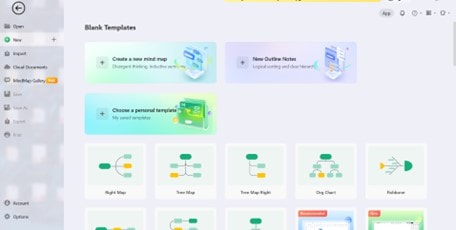
1. Key elements of EdrawMind:
- EdrawMind's intuitive and user-friendly interface makes it easy for users to create and manage mind maps.
- EdrawMind has templates that can be personalized for various objectives, such as education, project management, and personal growth.
- Mind offers a variety of customizable templates for different purposes, including education, project management, and personal development.
- EdrawMind offers a vast library of icons, graphics, and symbols that users can use to enhance the visual appeal of their mind maps.
- EdrawMind offers multiple layout options, including horizontal, vertical, and radial, allowing users to customize the look and feel of their mind maps.
Advantages of EdrawMind:
- EdrawMind lets people work together in real time, making it great for team projects.
- EdrawMind's task management feature lets users create and handle tasks inside their mind maps, set deadlines, and monitor progress.
- EdrawMind can export and share mind maps in various formats, including PDF, PNG, and Microsoft Office, making it easy to share with others.
- EdrawMind works on different platforms like Windows, Mac, and Linux and has mobile apps for iOS and Android devices.
Disadvantages of EdrawMind:
- EdrawMind can have a bit of a learning curve for beginners, as its extensive feature set can initially be overwhelming.
- The free version of EdrawMind has limited collaborative capabilities, making it challenging to work on projects with others.
- The basic plan of EdrawMind has limited export formats, which may be a drawback for users who need to share their mind maps in specific forms.
2. A Quick Guide To Create World History Timeline Using EdrawMind
The following section is a step-by-step method to create a simple world history timeline using EdrawMind.
Step1
Open EdrawMind and click New to create a new document. Click Winding Timeline from the dropdown list.
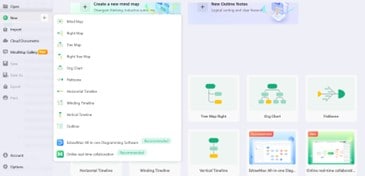
Step2
Customize the template to fit your specific timeline needs by adding, removing, or editing the timeline shapes, text, and colors. You can adjust the timeline layout, font size, and spacing to achieve the desired look and feel.
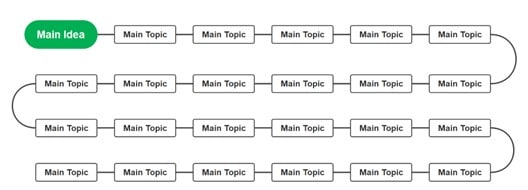
Step3
The figure below shows an example of a completed history timeline of iPhone. Once completed, save your timeline by clicking on File and selecting Save As. Choose a name and location for your file and click Save.

Frequently Asked Questions
After reading this article, you might wonder what are the key events of world history that are fascinating and world-changing. The following questions will highlight some key moments in world history that are significant in today's lives.
-
When Did the First Civilizations Emerge?
Around 4000 BCE, the first civilizations appeared in different parts of the world, like Mesopotamia (now Iraq), Egypt, the Indus Valley (now Pakistan and India), and China. These civilizations had writing systems, cities, social hierarchies, and advancements in agriculture and technology. They were important for the development of complex societies and the evolution of human history. -
What Events Led to the Fall of the Roman Empire?
The fall of the Roman Empire was a big and complicated event over many years. Some important things that led to its decline were problems with politics, money, and war. There were also attacks from other groups, and people started to care less about doing what was right.
The fall of the Western Roman Empire is traditionally dated to 476 CE when the Germanic king Odoacer deposed the last Roman emperor, Romulus Augustus.
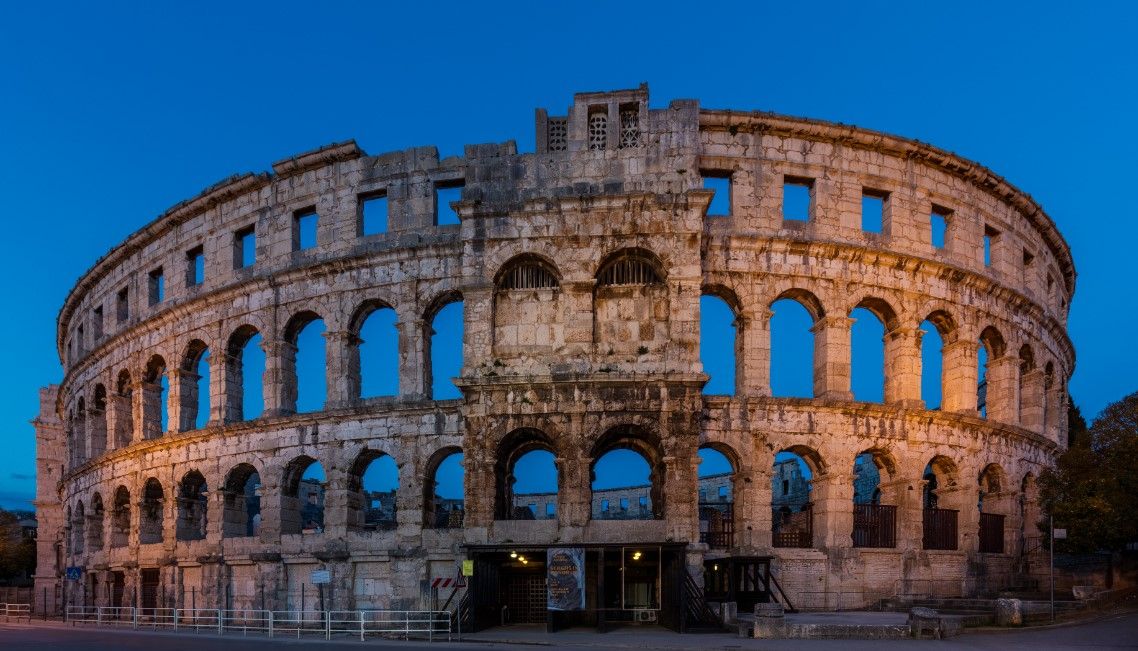
-
When Did the Industrial Revolution Begin, and How Did It Change the World?
The Industrial Revolution began in the late 18th century in Britain and lasted until the mid-19th century. It was characterized by a shift from manual labor to machine-based manufacturing, the development of new technologies such as steam engines and spinning machines, and a significant increase in productivity and output.The Industrial Revolution considerably changed the world and had positive and negative effects. It transformed how people lived and worked and helped create the modern economy and society. However, it also had negative impacts, such as worker exploitation, environmental damage, and social inequality.
Conclusion
This article talks about something called the world history timeline. It has six major parts: Foundations, Classical, Post-classical, Early Modern, Modern, and Contemporary. Pictures can help us understand it better. The article explains why the world history timeline is important and discusses some of its essential parts.
Creating the world history timeline on Wondershare EdrawMind is simple. You can customize how you want to share your timeline and add as much or as little information as you desire. Most importantly, you can use EdrawMind to make your timeline can help you make it look good and show your ideas clearly.



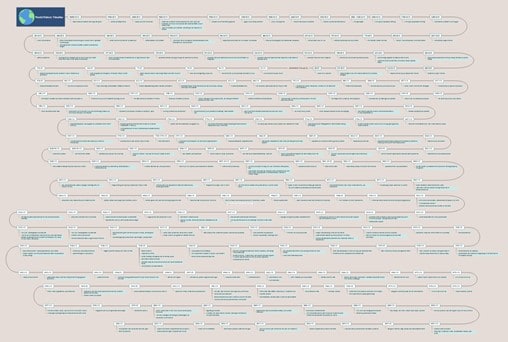
 below.
below.  below.
below. 